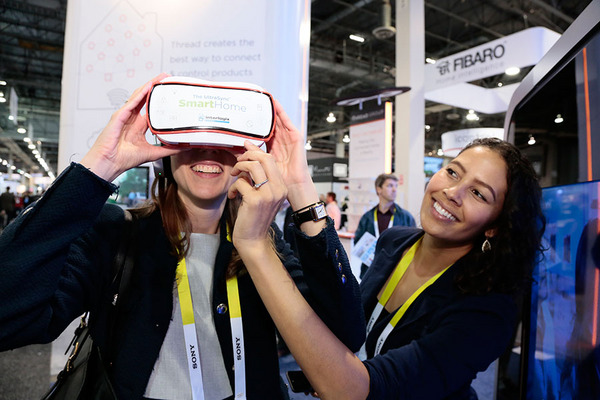
Sensory overload. That’s what you’ve come to expect from the Consumer Electronics Show, and the 2016 show delivered in spades. Droves of drones, theaters of virtual reality users, and entire conference halls filled with connected cars that can access everything from your home automation system to autonomous driving. CES is a mega-event, and this year’s show packed more gadgets and gizmos into the sprawling Las Vegas Convention Center than ever before. We hit the show floor to glimpse the latest technology and innovations on display from companies from around the world to understand what’s on the horizon—and what needs protecting.
Wearables
It used to be that the majority of wearable technology products would reside in the fitness-related category: gadgets designed to monitor (and sometimes motivate) your body movements, track sleep patterns and measure your heart rate while communicating infinite amounts of data to applications and tools designed to convey your daily progress. Now companies are taking the term “wearable” tech literally, with suits, purses, belts and more communicating their owner’s data to nearby devices.
Under Armour launched its first lines of wearable tech with the UA HealthBox at this year’s CES to much acclaim. This bundled package features a Bluetooth-enabled scale, heart rate monitor and band for the wrist that tracks steps, distance, resting heart rate and sleep. But what if the wearer’s “electronic identity” is stolen? Could someone assume/monitor your movements, heart rate, sleep or track your location? (Who cares? Read our security researcher Lysa Myers’ recent piece on how fitness trackers are already being used in court, by law enforcement and others.) We’re interested to see how this growing sector looks to secure the endless amounts of personal data.

Samsung announced a slew of fashion-forward gear that takes wearable tech from the gym to the boardroom. From smart suits and stylish leather belts to high-end solar purses, the South Korea-based electronic juggernaut displayed its latest arsenal of technology that blurs the line between fashion and function. Here are just a few that caught our eye:
Samsung Smart Suit: Features NFC hardware in the wrist portion of the jacket to unlock your phone when you take it out of your pocket. (NFC or Near Field Communication offers its own security concerns—see a sample of recent instances here.)
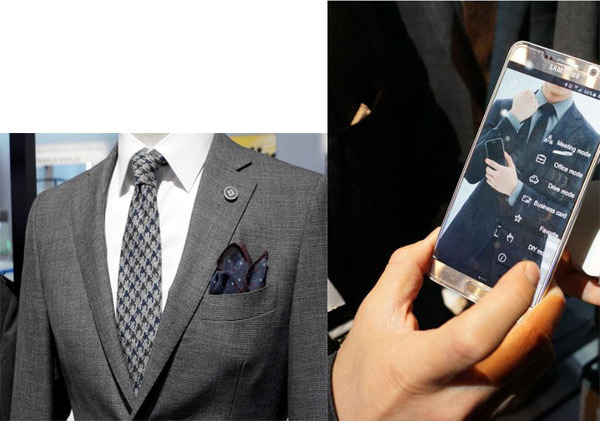
Samsung Welt: This smart belt tracks how many steps you’ve taken, your waist size and how long you’ve been sitting and transmits data to an app.
Samsung Sol Bag: Purse containing solar panels on the side that allow you to charge your Galaxy smartphone or other Samsung devices.
Connected Cars
How smart are cars when it comes to cybersecurity? I leave that to my fellow CES attendee and ESET security researcher Cameron Camp, who wrote a comprehensive post on car security at the show.
Drones
Every size, shape and color, including the show-stopping EHang 184 autonomous-flight drone that can fly a person to a given destination by simply inputting destination details. The 18-foot long, 440-pound drone has four arms and eight propellers and can fly up to 63 MPH for 23 minutes and travel a distance of about 20 miles. It can carry one passenger and does not need a pilot. Once a destination is set, only a “take off” or “land” button needs to be pushed to travel. Here’s Cameron’s take on drones at CES and the associated security concerns.
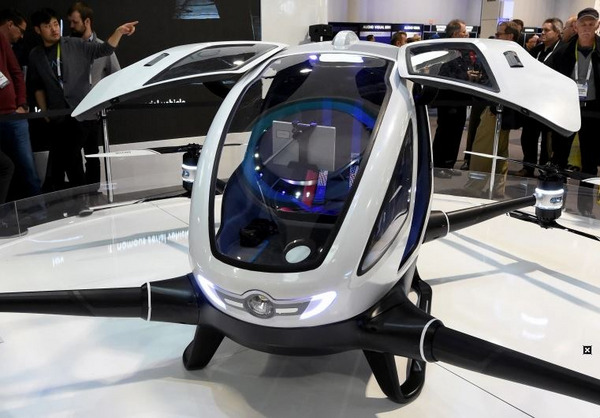
Wee-sized drones also garnered attention. At Tuesday night’s keynote, Intel CEO Brian Krzanich showed off the Nixie: a wristband that transforms into a camera-equipped drone that maintains the subject in frame while capturing video or photos. It’s as if you have your own personal photographer while you ski, bike, hike or do just about anything else you can think of... that wraps back around your wrist when done. Yes, we’ve reached the age of transforming, semi-autonomous robotic devices.
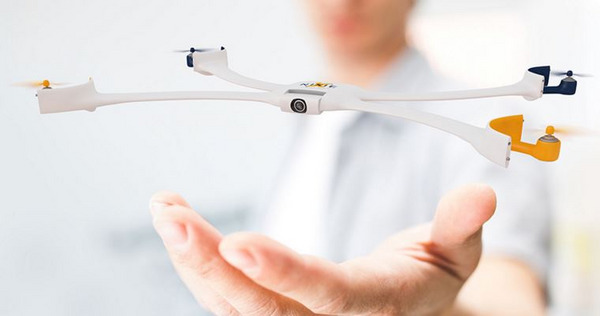
Virtual Reality
VR really stole the show this year with headsets, cardboard cut-outs, plastic prototypes and more on display at every turn. Samsung had a huge line of attendees eager to try its latest Galaxy Gear VR in the incredible Galaxy Gear VR Theater with 4D. Attendees lucky enough to grab a headset and take a seat were instantly transported to the first row of a roller coaster. The reactions were realistic and visceral enough to prompt some people to check mid-ride to see if they were in fact still sitting in the theater.
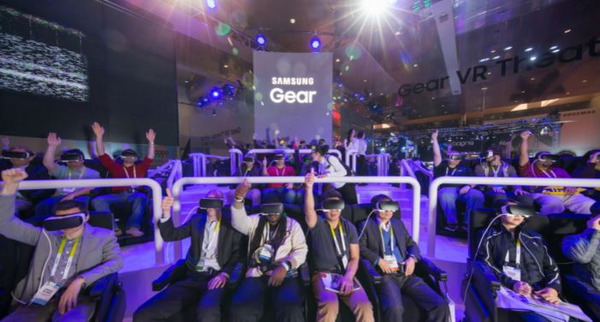
Connected Home
Home security company ADT offered Canopy, a line of home security monitoring products/services that can alert medical, fire, and other emergency responders. This $20-per-month service has heavyweight brands such as LG, Samsung, Ring and Wink all announcing support.
The Blink home monitoring system features one of the easiest home security camera systems available. The setup includes a wireless camera and a sync module. Simply connect the modules to your Wi-Fi network and the devices remain in sleep mode unless triggers are activated. When triggered, the camera powers up and sends an alert with a recording of whatever triggered it to an Android or iOS device.
DigitalSTROM developed a home system capable of creating a network using the home’s existing wiring. Small Lego-sized blocks are installed behind existing electrical boxes where things such as light switches and outlets are currently located, and a digitalSTROM Meter and Server are installed in the main circuit panel. The setup is then paired with cameras throughout the home that can recognize faces and gestures and automatically adjust lighting or cooking surface heights, or even brew a cup of espresso on your cue.
LG launched the all-in-one home control/security hub featuring a crystal clear 1080p security camera outfitted with a 5-megapixel lens that delivers a wide field of view and features motion, temperature and humidity sensors. It also features Z-Wave radios for controlling other smart-home devices.
LG’s Smart Security connects to the home Wi-Fi network. It can operate as a stand-alone component, or it can be paired with the above-mentioned ADT Canopy professional monitoring service.
In the appliances category, Samsung’s Internet of Things/Family Hub Refrigerator features a 21.5” built-in touchscreen for accessing apps and video. The Samsung Flex Duo Stove features Wi-Fi and allows you to start or stop or even monitor the oven from a distance. And Samsung’s new TVs work as a digital hub allowing the user to control all items in the smart home.
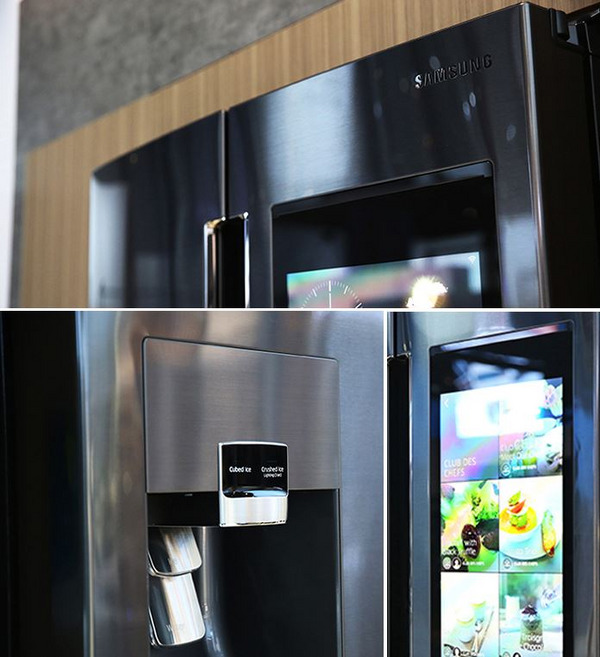
Internet of Things partnerships with Samsung, BMW and Microsoft allow users of Microsoft’s voice assistant Cortana to check, for example, if a load of laundry has been done or whether the fridge has been opened. Great way to monitor whether Junior is snacking ahead of dinner or whether the chores have in fact been completed.
As for the security concerns raised by all these nifty devices, the home Wi-Fi router can often be a gateway for cyberattackers, as Cameron Camp pointed out in his write-up. Yet a survey we recently commissioned found that 40 percent of users have never changed the router’s default admin password. Find important cybersafety tips for the home in this infographic based on the survey.
With all these advances in technology and the legions of devices capturing, monitoring, communicating and tracking everything, ensuring that users’ personal data remains private and protected is even more critical. At this year’s CES, we found vendors were considering security at the outset and protecting data in transit, at rest and anywhere in between. This is a major factor when developing products with the goal of simplifying your life. Let’s hope the manufacturers continue to place a premium on security. We know we love this tech—and we know we love protecting personal data even more.